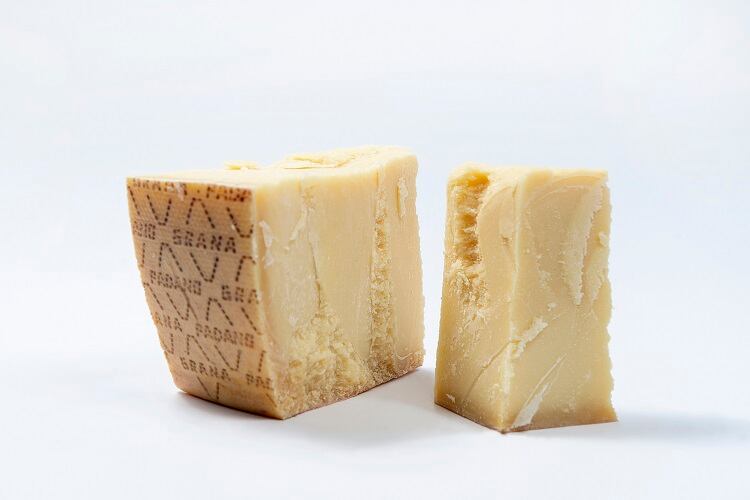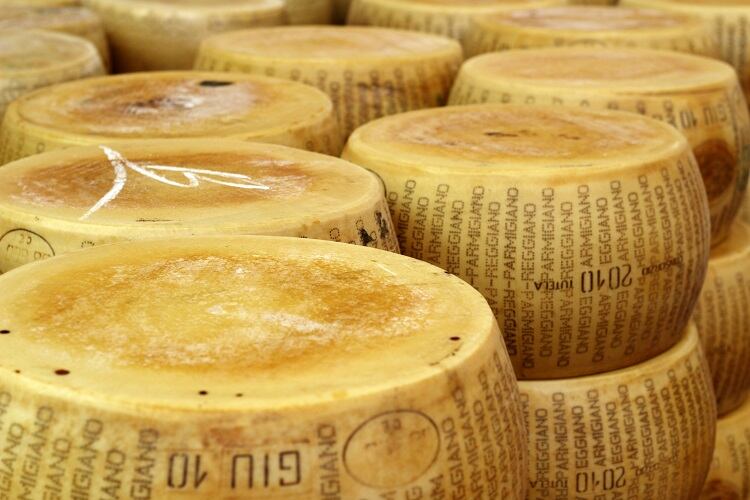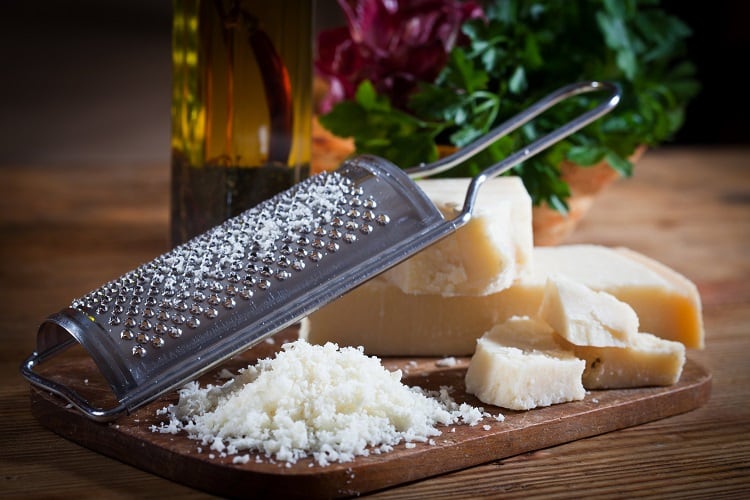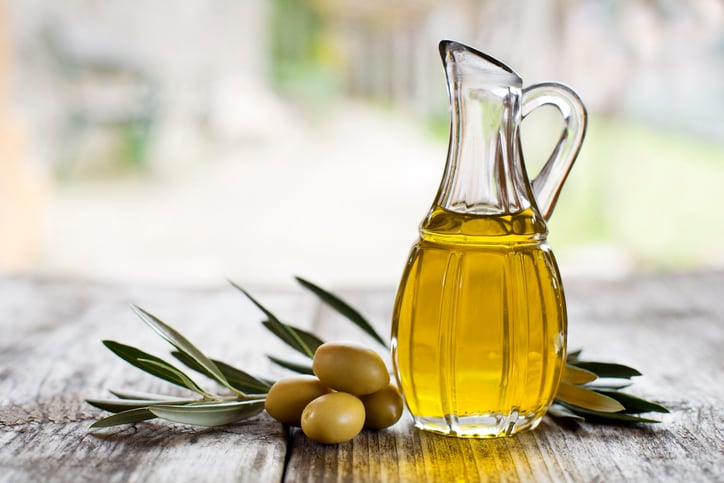Consortia of two of Italy’s most famous protected designation of origin (PDO) products, Parmigiano Reggiano and Grana Padano, are refusing to approve labels incorporating traffic light schemes – arguing that they ‘devalue practices’.
An effective labelling scheme?
Nutri-Score has been on the market for around six years. First developed in France, the nutrition labelling scheme has since been adopted by Belgium, Spain, Germany, the Netherlands, Luxembourg, and Spain.
It is not yet known whether Nutri-Score will take on a bigger role going forward. The European Commission has committed to proposing a mandatory, EU-wide front-of-pack (FOP) labelling scheme by the end of next year, but what format this label will take has yet to be revealed.
Nutri-Score is, as the Parmigiano Reggiano and Grana Padano point out, a traffic light scheme. Food are ranked from -`15 for the ‘healthiest’ product to +50 for those that are ‘less healthy’, and on the basis of this score the product receives a letter with a corresponding colour code: from dark green (A) to dark red (F). The algorithm is based on a standard amount (100g) of product.

Several studies have indicated the effectiveness of Nutri-Score in its capacity to discriminate foods based on their nutritional composition.
In a 2018 study, international researchers compared five FOP labels designed to increase consumers’ awareness of foods’ nutritional quality and encourage healthier choices, across 12 countries. Nutri-Score came out on top.
And earlier this year, Public Health France (Santé Publique France) published the results of surveys conducted between 2018 and 2020 designed to better understand the label’s impact over the three years since its adoption. “These new results confirm that the French population is increasingly [adopting] the logo…” noted Anne-Juliette Serry, head of the agency’s Food and Physical Activities unit. “The positive development of the indicators confirms that the Nutri-Score plays a role in the purchasing habits of the French,” noted Anne-Juliette Serry, head of the agency’s Food and Physical Activities unit.
Single-ingredient products
The label is not without its sceptics, however. In particular, manufacturers of single-ingredient products argue that it discriminates against some traditional foods.
Europe’s olive oil industry, for example, says that Nutri-Score’s algorithm is ‘unfair’. According to the labelling scheme, olive oil receives a yellow ‘C’ rating, which the industry argues does not take into account the health benefits associated with the oil’s olive polyphenol content.

Some cheesemakers, too, have taken a strong stance against the labelling scheme – including those that claim to make two of the world’s ‘most important’ PDOs: Parmigiano Reggiano and Grana Padano.
The former, a hard, granular cheese made from cows' milk, is made in central north Italy. Grana Padano (protected by EU PDO law since 1996) is similarly made with unpasteurised cows' milk, but is younger and less crumbly than Parmigiano Reggiano (protected since 1992).
For the first time, the two consortia have come together in a joint Board of Directors to ‘say not to the Nutri-Score system’. In so doing, they are referencing Regulation no. 1151/2012 pursuant to Art. 45: “to adopt measures for the promotion of their products and, if necessary, to take action to prevent or counter measures which undermine or risk undermining the image of the products”.
The reason for the consortia’s rejection is at least two-fold: Nutri-Score’s algorithm is a per 100g amount; and they argue the labelling scheme does not consider the cheeses’ nutritional benefits as an accompaniment.
A question of quantity
The algorithm, the consortia claims, mislead and deceives consumers. “Real consumption of the products is related to absolute quantities that do not correspond to the amounts on which the algorithm is based,” they argue.
For example, the average quantity of cheese in a dish can vary from 20g to 40g. For extra virgin olive oil, the serving can vary from 10g to 20g. For other food products, such as pasta, potatoes, or fruit, consumption may be higher than 100g.
The consortia are supportive of providing nutrition education related to overall diet as well as information about ‘recommended’, ‘realistic quantities’ of individual products. But traffic light labels based on quantities that are ‘disconnected from the overall diet and recommended portions’ are misleading, they suggest. This is because the score are calculated on the basis of quantities (per 100g) that are ‘very unlikely’ to be consumed in practice.

According to the Nutri-Score algorithm, Parmigiano Reggiano and Grana Padano receive an 'orange' score. But the consortia argue that a dish made up of 80g pasta, 20g of extra virgin olive oil and 20g of PDO hard cheese would score, overall, 'green'.
“For this reason, labelling tools based on the traffic light principles are to be considered a practice that undermines PDO products because it discourages their consumption without any objective nutritional justification,” they noted.
“The goal should be to teach informed consumption of correct quantities, also taking into consideration the overall organoleptic characteristics of the product.”
Adding protein and ‘important nutrients’ to dishes
Another key concern relates to the ‘nutritional balance’ between foods and the overall organoleptic characteristics of the hard PDO cheeses themselves.
Cheeses, according to the consortia, are penalised for their fat content. However, Nutri-Score neglects the fact that cheese provide many important nutrients, including calcium, functional fatty acids, fat-soluble vitamins, and essential amino acids.
From a nutritional point of view, for example, the addition of a 30-40g serving of Grana Padano PDO or of Parmigiano Reggiano PDO to a dish of spaghetti adds proteins, raw milk microorganisms, and improves the ‘tastiness’ of the dish, argues the consortia. Further, ‘in a controlled way’, it can replace salt in the cooking of pasta, ‘thus better meeting the needs of the individual consumer’.
“As the Nutri-Score system is based on generic and certainly not educational information to the consumer, we believe that it actually betrays the ultimate goal it had set itself, namely, to encourage healthy and balanced choices from a nutritional point of view.”
Refusing traffic light labelling
Therefore, when a manufacturers of Parmigiano Reggiano or Grana Padano is asked, on a voluntary basis by a buyer, to change the labelling of a PDO product to include a traffic light labelling scheme – which, like Nutri-Score, does not take into account the ‘actual quantities’ of the products consumed in practice, and which do not provide details about ‘balanced diets’ – the consortia will refuse.
“We have taken action, together with the friends of Grana Padano, against a labelling system that makes no sense and undermines the image of Parmigiano Reggiano, which nutritionists have also considered a healthy and natural product,” noted Nicola Bertinelli, president of the Parmigiano Reggiano Consortium.
It is an ‘act of responsibility’, she continued, which ‘in addition to protecting our product’, will benefit other agri-food products that would be ‘unjustly penalised’ by a system ‘without any objective nutritional justification’.
President of the Grana Padano Protection Consortium, Renato Zaghini, invited other producers to follow their lead. “Nutri-Score denies the balance between quantity and quality of foods as they key element of a proper diet at all ages.
“On the strength of these scientific guidelines, we invite all producers of Italian agri-food products of excellence, starting with PDOs, to join forces to improve communication and, at the institutional level, to support Government initiatives against this labelling system, as poor nutrition information has an adverse impact not only on the producers investing in quality and sustainability, but also on the proper diet of consumers.”
Source: Nutrients
'Objective understanding of front-of-package nutrition labels: An international comparative experiemental study across 12 countries'
Published 18 October 2018
DOI:https://doi.org/10.3390/nu10101542
Authors: Manon Egnell, Zenobia Talati, Serge Hercberg, Simone Pettigrew, and Chantal Julia.




